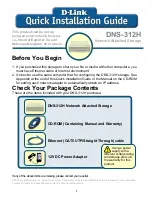
DL4300 Appliance
Changing encryption key types
112
Complete the steps in this procedure to export an encryption key.
1. Navigate to the Rapid Recovery Core.
2.
On the icon bar, click (More) and then select Encryption Keys.
The Encryption Keys page appears.
3.
Locate the encryption key you want to export, click its drop-down menu
, and select Export.
The Opening EncryptionKey-[name.key] dialog box appears.
4. In the dialog box, select Save File to save and store the encryption keys in a secure location, and then
click OK.
The encryption key downloads as a text file to the default location, such as the Downloads folder of the
active Windows user account.
5. Optionally, if you want to import this key into a different Core, copy the file to a location accessible from that
Core.
Parent topic
Removing an encryption key
When you remove an encryption key from the Encryption Keys page, the key is deleted from the Rapid Recovery
Core.
NOTE:
Removing an encryption key does not decrypt the recovery points already saved using the key.
You must still retain and provide the passphrase for the key to recover data for existing encrypted recovery
points.
You cannot remove an encryption key that is already associated with any protected machine. You must first view
the encryption settings for each protected machine using the key, and disassociate the encryption key you want to
remove. For more information, see the topic
Disassociating an encryption key from a protected machine
Complete the steps in this procedure to remove an encryption key.
1. Navigate to the Rapid Recovery Core.
2.
On the icon bar, click (More) and then select Encryption Keys.
The Encryption Keys page appears.
3.
Locate the encryption key you want to remove. Click its drop-down menu
, and select Remove.
The Remove Encryption Key dialog box appears. You see a message confirming the action to remove the
encryption key.
4. In the dialog box, confirm that you want to remove the encryption key.
NOTE:
Removing an encryption key does not decrypt the recovery points already saved using the
key. You must still retain and provide the key to recover data for existing encrypted recovery points.
The dialog box closes, and the encryption key you removed no longer appears on the Encryption Keys
page.
Parent topic
Changing encryption key types
Encryption keys list one of two possible types on the Encryption Keys pane: Universal or Replication. The type
indicates the likely origin of the encryption key, and determines whether you can change its details or passphrase.
You can modify these attributes only if the type is Universal. If you need to modify these attributes for a key with
















































